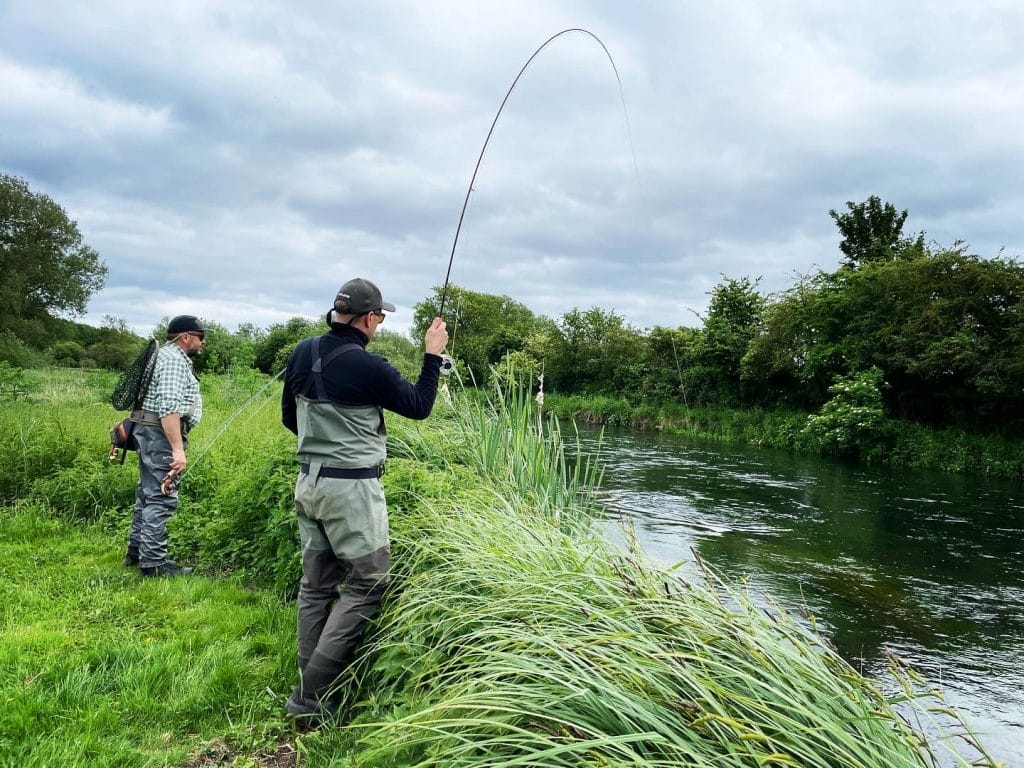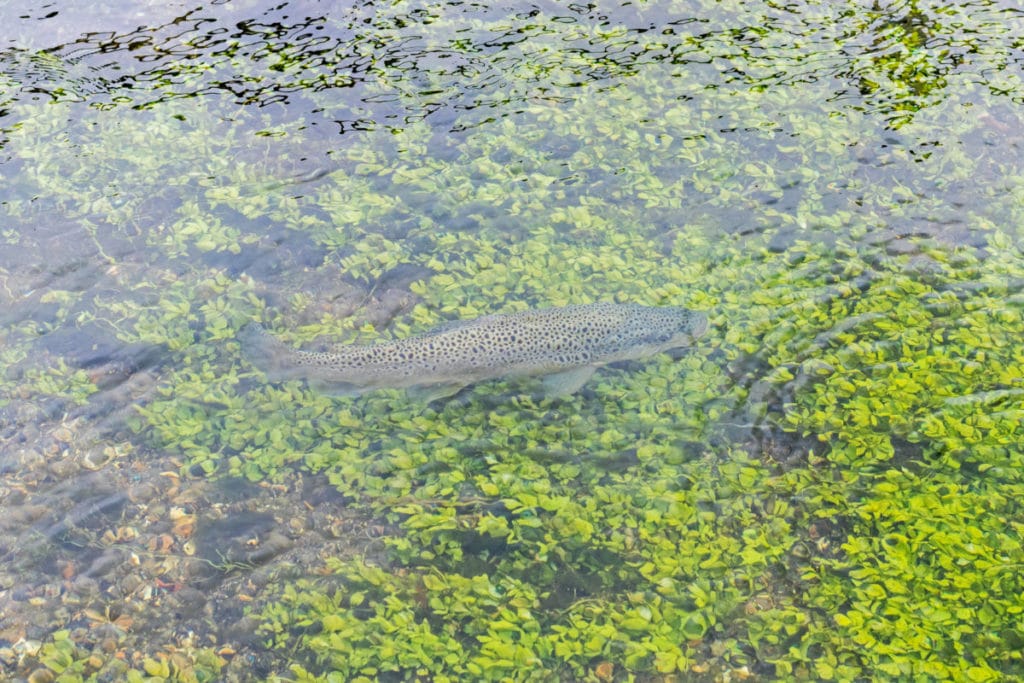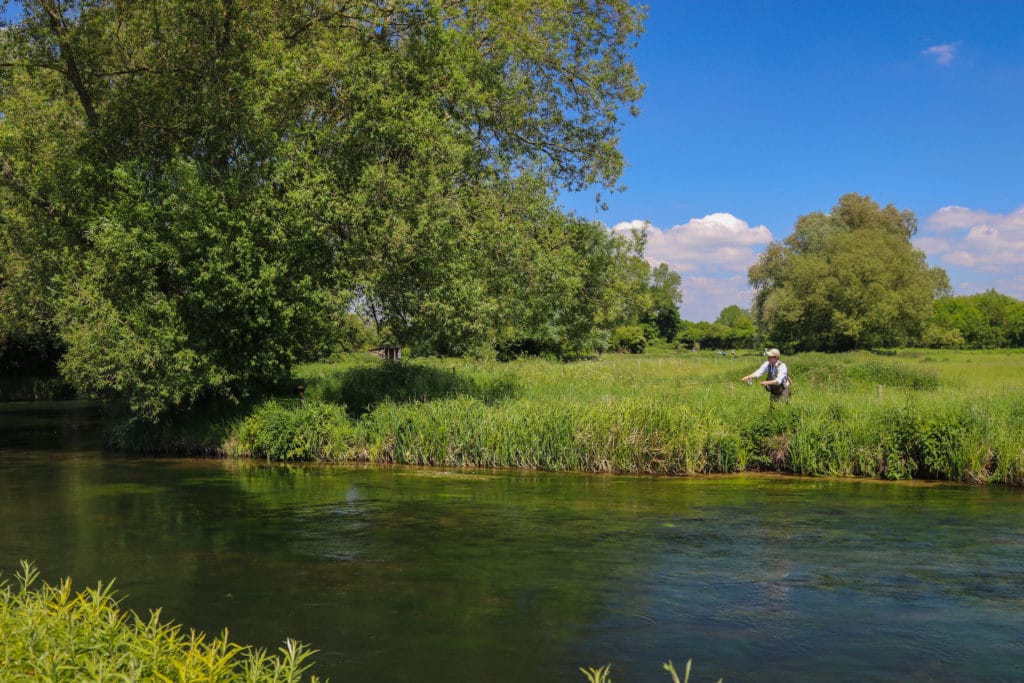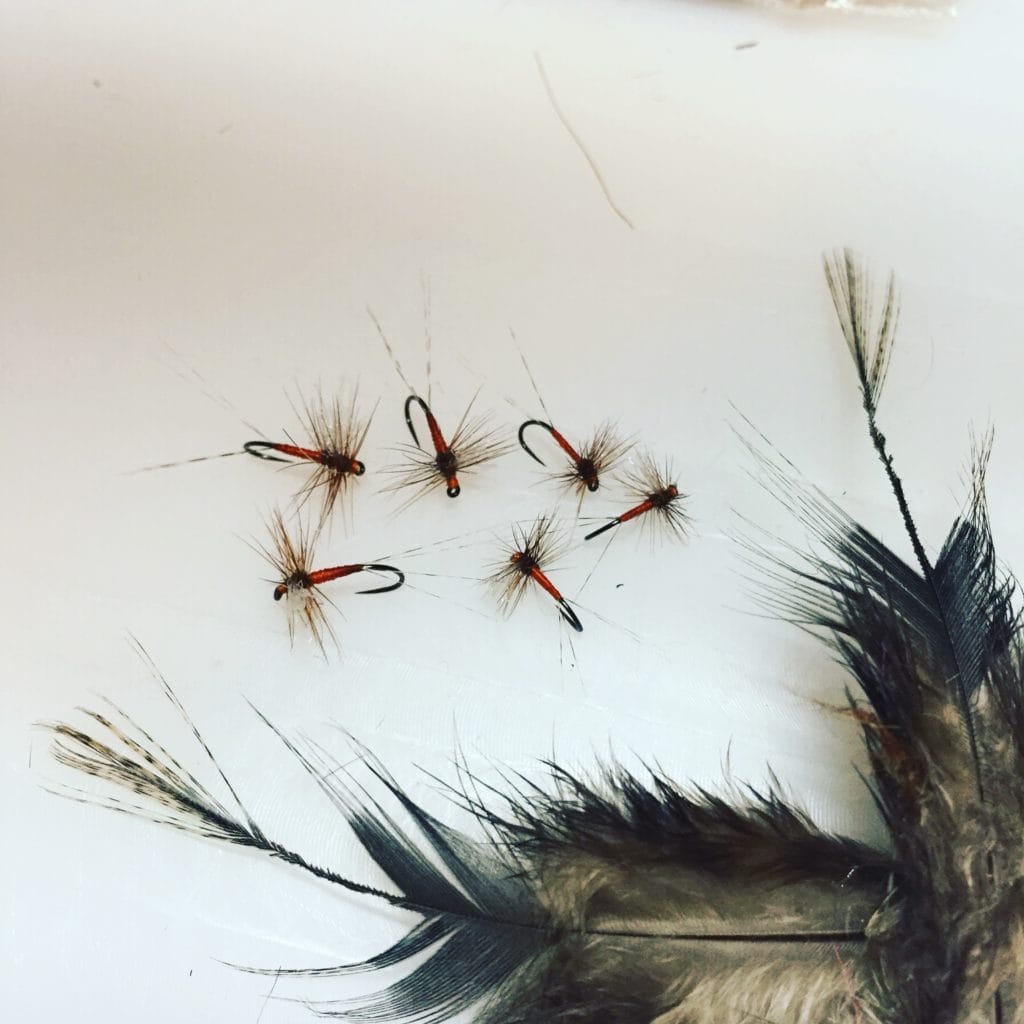Trout in rivers spend all their lives facing upstream, everything about their shape, scales, gills, fins are perfectly adapted to do this, evolution has engineered this master piece!
They can sit in flowing water with minimum effort. In the right amount of flow, a trout will maintain its position without moving a muscle. So this gives him plenty of time to keep an eye out for any suspected food passing in the current, or any unlucky insect on the surface. Their watchful eyes are doing this 24/7, no sleeping for one that does not have eyelids. In order to fool Mr. Trout into taking a dry fly, one has to make their artificial fly land as ‘light as a feather’, there will be no tricking him with a ‘poorly presented plop’ of a fly.

The ability to cast a well presented dry fly really does come down to practice, followed by a few well hooked tree branches and plenty more practice. But, before commencing practice, it’s absolutely crucial you have got the correct tackle set up. I am not talking for a specific location or river, more the correct line to suit the rod. A good quality line is probably at the top of my list out of all the tackle one uses.

Dry fly fishing for trout is not generally executed at a huge distance, so let’s not worry about aggressive tapers and long running lines. Most of the fly lines these days are ‘weight forwards’, something with a head length of around 50 ft would be sufficient. This may seem like a long head for the job, but it has the length so you can control the line whilst casting at various distances. Now what you really looking for is the ‘front taper’. This need to be a very gradual and elongated taper, this allows the cast to turn over very smoothly, as the energy creeps down the front taper continuously turning over the line in a controlled but open U loop.
To compliment this lovely open loop perfect for dry fly presentation, a tapered leader is an absolute must. Basically, all the energy put into a casting, is finely whittled away as the line tapers down to the fly. In theory, there should be just enough energy to turn the fly over and come to a halt in mid-air a couple of feet above your target. Done correctly, it is like dropping the fly from just above the fish’s head. A good cast, with an ‘on the edge of your seat’ chin up refusal, in my eyes is an achievement in itself, but fly choice leaves a lot to be desired.
There is a few tricks which can be bought at your local tackle shop too, obviously floatant being the number one in the dry fly fisher’s armoury, never go to the river without it. The gel floatants are probably the best form to go for, easy to apply the correct amount and leaves minimal slick on the water surface. Some floatants come in a powder form, not as durable, but amazing for drying the fly before applying gels or for using on its own to prolong the life of CDC-style dry flies.
A pot of mud, leader sinkant, is another ‘must have’ on the list at the shop for dry fly fishing, but why sinkant for floating flies? A small amount applied on the last 5ft of tippet can help when fishing for super spooky fish. The mud takes the tippet sub surface, and therefore doesn’t leave any traces on the surface film of the water, and reduces the chance of any light reflections off the line too.
Cast softly, aim higher than you think, a trout looking up is never going to take a ‘poorly presented plop’.
For more information please do not hesitate to contact us by EMAIL or call our office on +44(0)1980 847389.
About the author: Peter McLeod


